Concrete grade for blind area

Blind area - a special covering in front of the building, which is used in order to increase the life of buildings. Blind areas allow you to protect the foundation from melt water. In addition, the blind areas can be used as a walkway next to the building. The reliability and safety of the foundation depends on the strength of the blind area, therefore, before building, you need to choose a reliable brand of concrete.
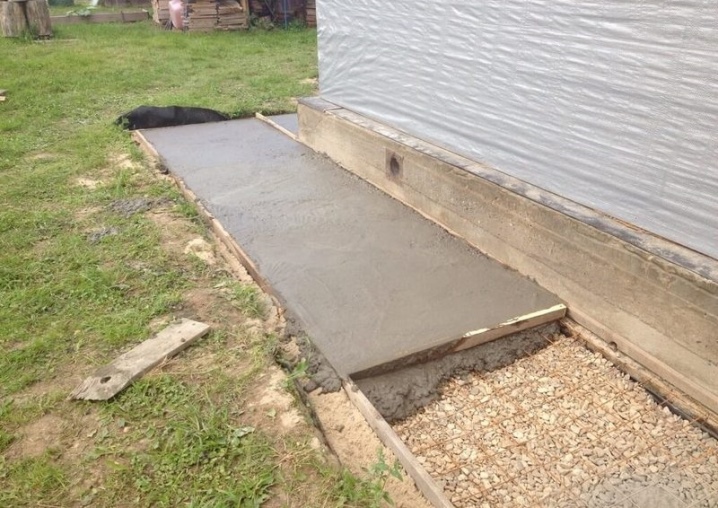
Peculiarities
Often, cement or concrete is used at the basis of the blind area and similar structures.
The blind areas do not allow the flowing water to pass to the foundation. Accordingly, the foundation will always be dry, moisture will not cause corrosion, and the service life of the structure will increase.
If water seeps to the foundation, it will turn to ice in winter. The ice expands, eroding the base of the building, and the building can be badly damaged. Therefore, blind areas are installed without fail around all buildings.
For laying high-quality and durable blind areas, special concrete compositions are most often used, adapted to changing weather conditions.
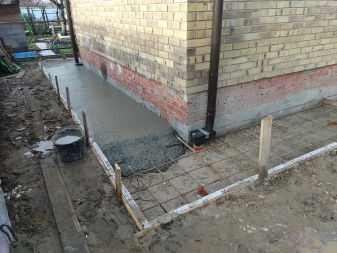
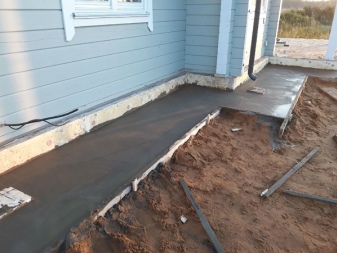
General requirements
Blind areas installed around the perimeter of the foundation can be laid using concrete with a minimum level of strength. Such screeds do not have to be designed for heavy loads at all. Although the blind areas often act as sidewalks, there will be no intensive flow of pedestrians and cars on them, which means that the load on the structure is assumed to be minimal. According to SNiP norms, the correct design of the blind area must have the required width and a certain thickness of the cement layer of the screed.
Consider three rules for outdoor concreting.
-
Blind areas should have good moisture resistant characteristics. Therefore, formulations that pass water well are not suitable here.
-
The main criterion for concrete compositions for laying the blind area is resistance to temperature extremes and weather changes.
-
The concrete structure must be able to support the weight of pedestrians and vehicles.

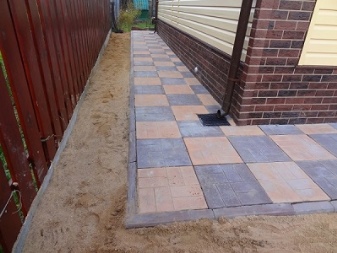
Before calculating the amount of ingredients of the poured solution, the characteristics that the screed should have are taken into account:
-
resistance to temperature extremes;
-
waterproofness;
-
stability;
-
strength.
The higher these qualities, the longer the lifespan of the blind area becomes.
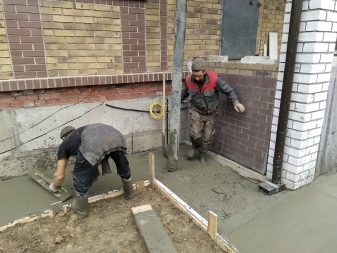
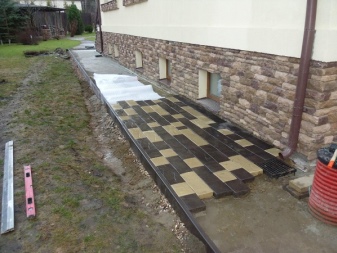
Brand selection
GOST 7473-94 (9128-97) is a document that must be guided by when choosing concrete mixtures. This document presents all the characteristics and quality nuances that the concrete composition must meet.
A brand is a conditional indicator of the strength of concrete compositions in compression.
If you choose a brand of concrete for laying a blind area for private housing, you need to consider under what conditions it will be used:
-
climatic conditions and quality of soil in the place of future construction;
-
approximate loads on the structure of the blind area.
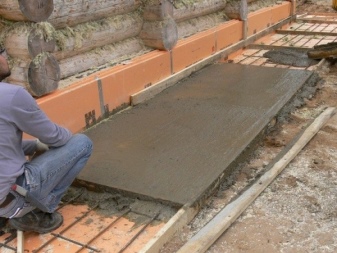
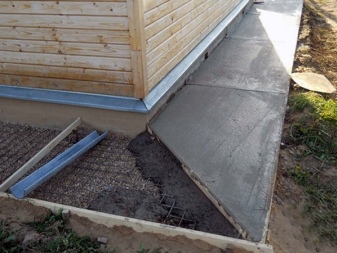
When creating blind areas for housing outside the city, concrete mixes must meet certain criteria:
-
resistance to severe frosts (minimum indicator) - F150;
-
permissible strength level - B15;
-
concrete mix grade - M200.
This material is considered one of the most commonly used in the construction industry. The material is used for laying staircases, floor slabs, foundation structures, steps.
When diluting the solution, you can pour cement of the M400 (500) brand into it.
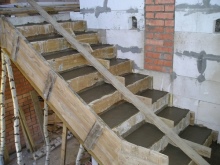

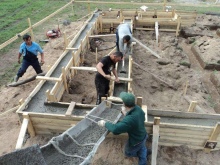
If the work is carried out on heaving soil, then the strength criteria and other characteristics increase by several points.
When building in regions with unstable temperatures and abrupt weather changes, it is better to make a mortar using concrete of the M250 brand. Medium strength concrete is most commonly used for lightly loaded structures or for belt fencing. The material is resistant to corrosion, temperature extremes and cracking.
Stronger types of concrete grade M300 (400) are suitable for the construction of cottages, high-rise buildings and workshops. Large buildings often experience vibration from wind or highway traffic.
Therefore, low-strength grades are not suitable for the construction of such buildings - the building will quickly collapse.
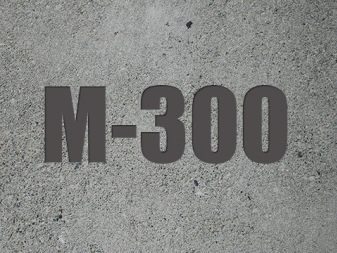
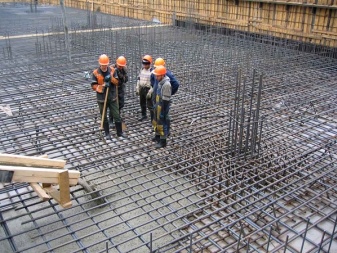
To calculate the volume of concrete composition for laying the blind area, it is necessary to multiply the dimensions of the structure: width, length and thickness.
During construction, small losses of concrete mortar are permissible. Therefore, an increase in the amount of solution by 15% should already be included in the overall calculation.
In the manufacture of concrete of various grades, intended for the construction of a blind area, the solution should consist of the following proportions:
-
about 3 parts should be pre-sieved sand;
-
1 part - filler, most often crushed stone;
-
about 0.5 part is water;
-
1 part is cement.
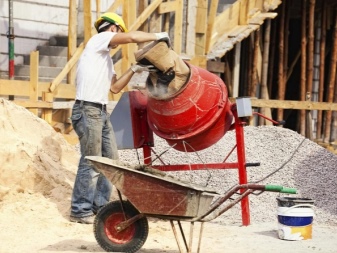
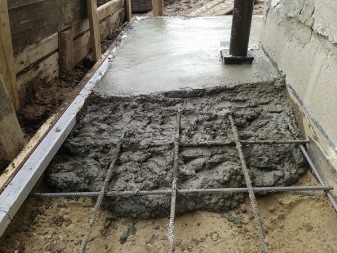
The amount of liquid is determined by the scale of the individual portions of the filler. The larger the stones, the less liquid you need to add to the mixture.
Judging by these proportions and calculating the total mass of the components, then 1 m³ of building material will require:
-
840 kg of dry sand (washed sand without clay deposits is used);
-
280 kg of high grade cement M400 (the stronger the material, the less it will be required);
-
1400 kg of crushed stone or other filler (it is best to use granite cubic stones with a diameter of 5-10 mm);
-
about 200 liters of water.

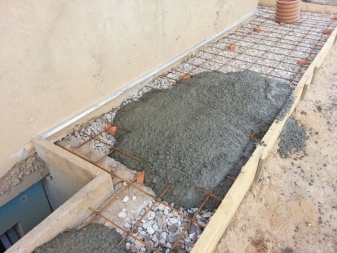
If you use M300 Portland cement when mixing the M200 solution, then the ratio of the components will be as follows:
-
3.7 parts of crushed stone or other filler;
-
1.9 parts of sand;
-
Part 1 will consist of Portland cement.
It is possible to enhance the hydrophobic properties of the structure if plasticizers are added to the concrete solution, or by choosing polypropylene fiber for these purposes.
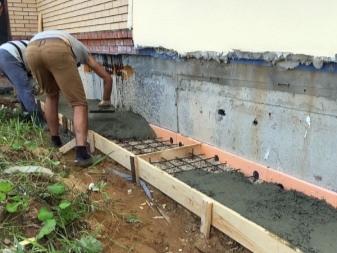

The finished concrete solution must be homogeneous. Only such a solution is suitable for the construction of a blind area for private houses. There should be no lumps in the mixture, and the consistency should be like a thick dough. To achieve such a consistency, and prepare the solution correctly, you must perform the actions in the following sequence:
-
pour water into a concrete mixer;
-
pour cement in small portions, turn on the concrete mixer - the solution should be mixed uniformly;
-
when a light foam appears on the surface of the mixture, you can pour in the filler;
-
after adding crushed stone, dry sand sifted in advance is poured into the solution;
-
at the very end we add modifying additives;
-
the final stage in the preparation of the solution will be thorough mixing - the solution should harden slightly and resemble thick sour cream.
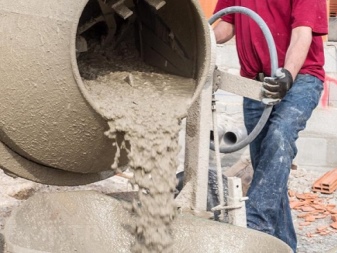
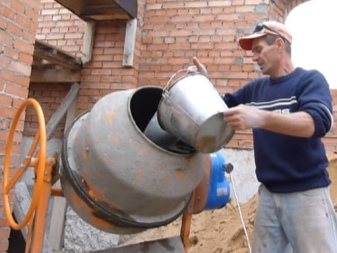
Can low permeability concrete be used?
When pouring a blind area around the perimeter of buildings, it is necessary to understand what the use of concrete grades with a low indicator is fraught with. A low grade indicates that concrete will not be resistant to temperature changes, may not withstand severe frosts, and moisture will penetrate into it. The lower the grade of the mixture, the more unstable the composition to weather changes.
In autumn and spring, when it rains often and the snow melts, a large amount of moisture forms in the ground. In winter, this moisture freezes, which leads to the destruction of the blind area and even the foundation of the structure.If water penetrates into the blind area and freezes with the arrival of cold weather, then the moisture will begin to turn into crystals that destroy the integrity of the structure. As a result, the concrete quickly collapses, becoming covered with small cracks.
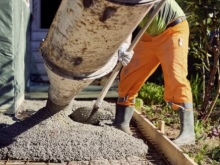
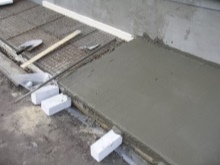
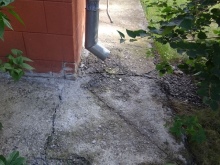
That is why the resistance to humidity and weather extremes is the main indicator that must be taken into account when choosing a concrete grade for the construction of private housing. The highest level of moisture resistance is distinguished by expensive brands.
For example, the price of concrete of the M400 grade is almost 1.5 times higher than the price of concrete of a lower grade - M100. However, the latter material is quite durable and is perfect for casting paths and erecting buildings that can withstand heavy loads.
For unloaded blind areas, it is simply impractical to buy such material.
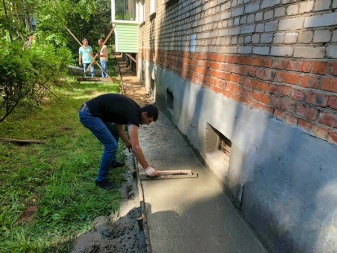
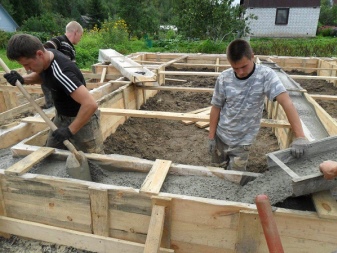
How to increase?
To increase the moisture resistance of the formulations, agents such as "Penetron" and "Aquatron" are often used. These products are designed to provide a higher level of moisture resistance to surfaces. The constituents of the products interact with concrete and form special compounds that do not dissolve. At the same time, the compositions do not block the pores of the concrete, without interfering with the natural air exchange of the material.

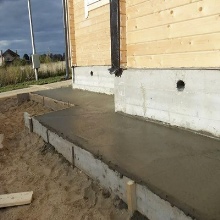














The comment was sent successfully.